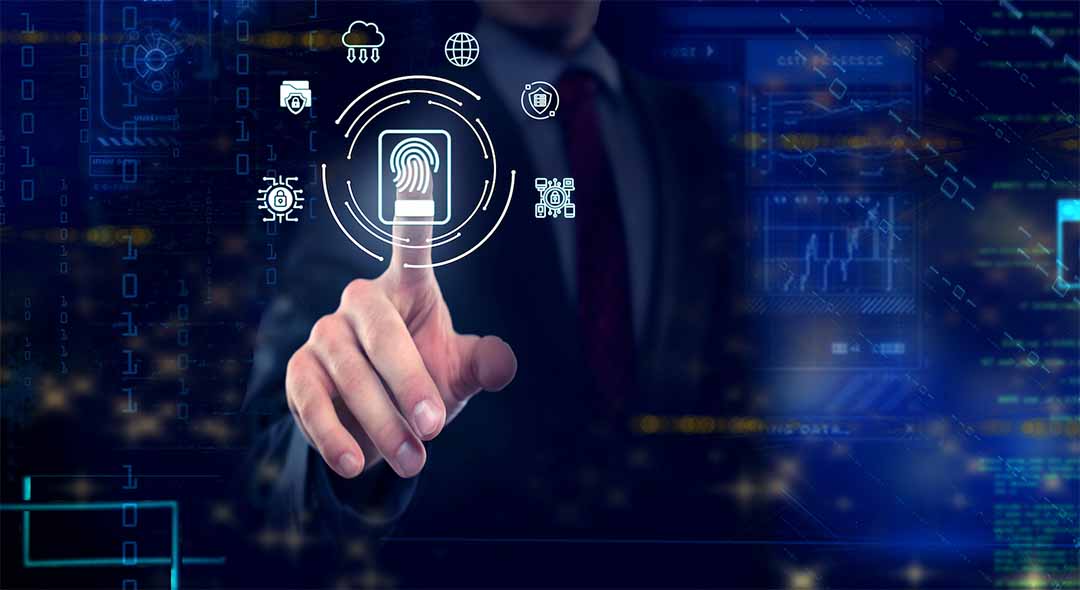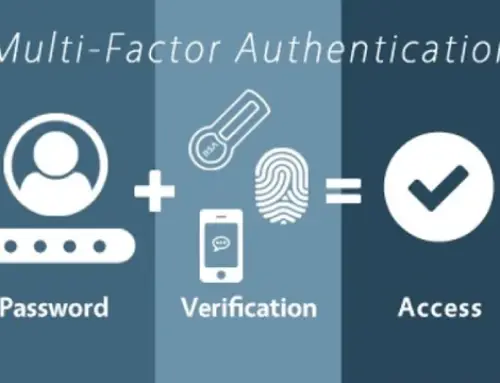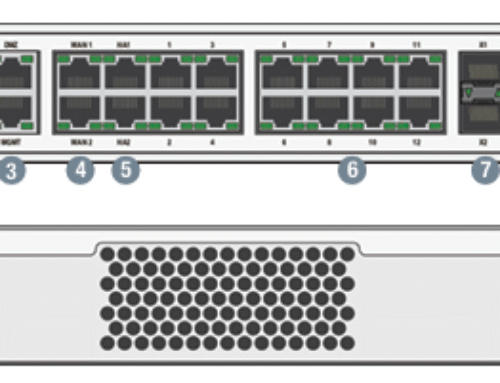
How Biometric Authentication Can Revolutionize Your Enterprise Security Strategy.
Biometric Authentication: A Complete Guide to Enhance Security and Revolutionize Modern Security
In an era dominated by digital interactions, safeguarding sensitive information is paramount. Biometric authentication offers a revolutionary approach to security, replacing traditional passwords with unique biological traits. This comprehensive guide explores the depths of biometric authentication, illustrating how it enhances security and reshapes the future of secure access and identity verification. Discover how biometric authentication works, from facial recognition methods to advanced biometric systems.
Understanding Biometric Authentication
What is Biometric Authentication?
Biometric authentication is an authentication method that relies on the unique biological characteristics of an individual to verify their identity. This type of authentication can use biometric data like fingerprint scans, facial recognition, iris scans, or even behavioral biometrics like gait analysis or voice patterns. Implement biometric authentication to enhance security by using these unique biometric traits to grant access to systems, devices, or physical locations. Compared to traditional password-based methods, biometric authentication offers a high level of security because it is difficult to forge or steal biometric information.
The Importance of Biometrics in Security
The significance of biometrics in modern security cannot be overstated. As cyber threats become increasingly sophisticated, traditional password-based security measures are often inadequate. Biometric authentication offers a superior authentication solution by leveraging unique biometric traits that are difficult to replicate. Security systems that use biometric data provide a more secure form of authentication, reducing the risk of unauthorized access. By incorporating biometric authentication technology, organizations can dramatically enhance security and protect sensitive data from potential breaches. This improves security and convenience. Biometric authentication is a security measure to improve visibility.
How Biometric Verification Works
Biometric verification employs a multi-step authentication process. This process involves several key steps:
- Capturing biometric data, such as a fingerprint or facial image, by a biometric system.
- Processing and comparing this biometric information against a previously stored template.
If the captured data matches the stored template within an acceptable threshold, the individual is authenticated through a biometric identification process. Many biometric authentication systems also incorporate multi-factor authentication, combining biometrics with other security measures like PINs or one-time passwords for an added layer of passwordless authentication protection. This secure authentication process ensures that only authorized individuals gain access. Biometric authentication offers continuous authentication, verifying identity throughout a session as part of a comprehensive security process.
Types of Biometric Authentication Methods
Facial Recognition Technologies
Facial recognition technologies represent a prominent type of biometric authentication method. This system uses facial features to verify an individual’s identity. The system captures biometric data, analyzes facial landmarks, and compares it against a stored template. Advanced algorithms enhance security by accounting for variations in lighting, angles, and facial expressions. As a robust authentication method, facial recognition offers security and convenience across various applications, from unlocking smartphones to controlling access in secure facilities. Implement biometric authentication using facial recognition to enhance security, ensuring secure identity verification in various environments. Security systems incorporating facial recognition improve authentication.
Fingerprint Recognition
Fingerprint recognition is a well-established biometric authentication method. These systems rely on the unique patterns of ridges and valleys on a person’s fingertips. When an individual places their finger on a scanner, the system captures biometric data and compares it against a previously stored fingerprint template. Fingerprint authentication is widely used due to its reliability and ease of implementation. This form of authentication is commonly found in smartphones, laptops, and access control systems. Many security systems use fingerprint recognition as their primary biometric authentication solution. Fingerprint authentication offers a high level of security and convenience.
Iris and Retina Scanning
Iris and retina scanning are advanced biometric authentication methods that offer an exceptionally high level of security. Iris scanning analyzes the unique patterns in the colored part of the eye, while retina scanning focuses on the blood vessel patterns at the back of the eye. Both methods capture highly detailed biometric data, making them extremely difficult to spoof. These biometric methods are often used in high-security environments, such as government facilities and research laboratories, to enhance digital security. By using iris or retina scans, organizations can enhance security and ensure only authorized personnel gain access. This solution provides robust secure authentication, adding an extra layer of protection against potential threats. Multimodal systems often combine iris or retina scans with other biometric traits for enhanced security and convenience. Discover how biometric authentication using these methods revolutionizes secure access control.
Multimodal Biometric Authentication
Advantages of Multimodal Systems
Multimodal biometric authentication systems combine multiple biometric authentication methods to enhance security and improve accuracy. By using biometric data from different sources, such as facial recognition combined with fingerprint authentication, these systems reduce the likelihood of false positives and false negatives. This offers a higher level of security compared to single-factor biometric authentication. Multimodal biometric authentication is particularly effective in high-security environments where the risk of spoofing or circumvention is significant. Organizations that implement biometric authentication using multimodal systems benefit from robust and reliable secure authentication.
How Multimodal Authentication Enhances Security
Multimodal biometric authentication enhances security by requiring multiple biometric traits for verification. This process makes it significantly more difficult for unauthorized individuals to gain access. For example, a system might require both facial recognition and fingerprint authentication. The integration of these biometric methods ensures that even if one biometric trait is compromised, the other still provides a barrier in the security process. Security systems that use multimodal biometrics offer a more robust defense against identity theft and fraud. Multimodal biometric authentication offers enhanced security and convenience, making it a preferred choice for secure authentication.
Examples of Multimodal Biometric Solutions
Several multimodal biometric authentication solutions are available today, each designed to enhance security and provide reliable secure authentication through advanced biometric methods that do not rely on a single biometric trait. One example is a system that combines facial recognition with voice recognition, requiring users to both show their face and speak a passphrase. Another solution integrates fingerprint authentication with iris scanning, providing a high level of security. These multimodal systems are used in various applications, from secure access control to identity verification for financial transactions. Discover how biometric authentication using these multimodal solutions revolutionizes security, ensuring secure identity verification across different environments. Many organizations implement biometric authentication using multimodal technology to enhance security.
Benefits and Risks of Biometric Authentication
Here’s a simple and clear table showing the Benefits and Risks of Biometric Authentication:
| Benefits | Risks |
|---|---|
| 1. Provides faster and more convenient user authentication. | 1. Biometric data, once stolen, cannot be changed or reset. |
| 2. Difficult to forge or steal compared to passwords. | 2. Privacy concerns due to storage of sensitive personal data. |
| 3. Eliminates the need to remember complex passwords. | 3. Can be affected by physical injuries or changes (e.g., cuts on fingers). |
| 4. Enhances security through unique biological traits. | 4. May lead to false acceptance or rejection errors. |
| 5. Reduces chances of unauthorized access or identity theft. | 5. Centralized biometric databases are attractive targets for hackers. |
Benefits of Biometric Authentication
Biometric authentication offers numerous benefits compared to traditional password-based systems, including enhanced security and increased convenience. One significant advantage is enhanced security; biometric traits are difficult to forge or steal, making it a secure authentication method. Additionally, biometric authentication provides convenience as users no longer need to remember complex passwords, making it a preferred choice for passwordless authentication. This process can also improve efficiency by streamlining access control and reducing the risk of unauthorized entry. The benefits of biometric authentication extend to various applications, enhancing security and improving overall user experience through biometric security measures. Many security systems use biometric authentication to improve security and convenience.
Risks of Biometric Authentication
While biometric authentication offers many advantages, it also presents certain risks, primarily concerning data security and privacy. One primary concern is the potential for biometric data to be compromised. If biometric information is stolen or hacked, it can be challenging to replace, unlike a password. Additionally, some biometric authentication methods may raise privacy concerns, as they involve collecting and storing sensitive biometric data critical to biometric security. It’s crucial to implement robust security measures to protect biometric data and address potential vulnerabilities. Discover how biometric authentication manages these risks while maintaining secure authentication and enhancing security. The future of biometric authentication depends on how well these security risks are mitigated through advanced biometric methods.
Balancing Benefits and Risks
Balancing the benefits and risks of biometric authentication requires robust security measures and transparent policies to ensure that biometric data cannot be easily compromised. Organizations must carefully consider the potential vulnerabilities and implement robust security measures to protect biometric data. This includes using encryption, access controls, and regular security audits. Additionally, transparency and user consent are crucial; individuals should be informed about how their biometric data is collected, stored, and used. By addressing these concerns and implementing best practices, organizations can harness the benefits of biometric authentication while mitigating potential risks. The use of biometric authentication enhances security, ensuring secure identity verification and protecting sensitive information. Security systems that balance these elements offer the best protection.
The Future of Biometric Authentication
Emerging Biometric Technologies
The future of biometric authentication includes emerging technologies like behavioral biometrics and DNA authentication. Advancements in behavioral biometrics, such as gait analysis and keystroke dynamics, offer new ways to verify identity continuously and unobtrusively. These types of authentication monitor unique patterns in how individuals walk or type, providing an extra layer of security. Additionally, vein recognition and DNA authentication are gaining traction as highly secure authentication methods. Discover how biometric authentication technology continues to evolve, driven by the need for enhanced security and improved user experience, shaping the future of secure authentication.
How Biometric Authentication Will Shape Secure Systems
Biometric authentication will increasingly replace traditional passwords and integrate with multi-factor authentication for enhanced security. As biometric technologies become more sophisticated, they will increasingly replace traditional password-based authentication methods. The integration of biometric authentication systems with multi-factor authentication will provide robust security against unauthorized access. This shift towards biometric authentication offers continuous authentication, verifying identity throughout a session rather than just at login. Furthermore, the use of biometric data will enable more personalized and adaptive security measures. Many security systems will use biometric authentication as their primary method, enhance security and improving the overall user experience.
Challenges Facing Biometric Verification
Challenges for biometric authentication include accuracy, data security, and user acceptance. One significant concern is the accuracy and reliability of biometric systems, particularly in varying environmental conditions or with diverse populations, as biometric authentication has emerged as a security process that verifies identity. Ensuring the privacy and security of biometric data is also crucial, as breaches could have severe consequences for the overall security process. Additionally, addressing user acceptance and overcoming potential biases in biometric algorithms are essential for equitable implementation. Overcoming these challenges will require ongoing research, robust security measures, and transparent policies to maintain trust in biometric authentication methods and enhance security.
Implementing Biometric Authentication Solutions
Steps to Implement Biometric Systems
Implementing biometric systems requires careful planning and execution to maximize its benefits. This includes a series of steps, such as:
- Conducting a thorough risk assessment to identify vulnerabilities and determine the appropriate type of biometric authentication for their needs.
- Selecting a unimodal biometric authentication system can streamline the security process for organizations. reliable biometric system and integrating it with existing security infrastructure, which involves setting up secure biometric data storage, authentication protocols, and access controls.
Regular testing and monitoring are also necessary to maintain optimal performance and enhance security.
Choosing the Right Biometric Authentication Solution
Selecting the right solution depends on security needs, user population, and the environment. Facial recognition may be suitable for applications requiring convenience and ease of use, while iris scanning offers a higher level of security for sensitive environments. Consider the accuracy, speed, and cost of different biometric authentication methods. Organizations should also evaluate the vendor’s reputation and ensure compliance with relevant privacy regulations in their biometric security solutions. Selecting the right biometric authentication solution is essential for enhancing security and meeting specific organizational needs, particularly in terms of biometric identification.
Integrating Biometric Technologies with Existing Security Systems
Integrating biometric technologies with existing systems enhances security through seamless incorporation and multi-factor authentication. This involves seamlessly incorporating biometric authentication into access control systems, network security protocols, and identity management platforms. Ensure compatibility between biometric devices and existing hardware and software. Multi-factor authentication can be enhanced by combining biometric data with other security measures, such as smart cards or PINs. Properly integrating biometric technologies with existing systems enhances security and provides a layered defense against unauthorized access. Many security systems need to be upgraded to handle biometric data and ensure seamless integration for enhanced security.
5 Surprising Facts About How Biometric Authentication Can Revolutionize Your Enterprise Security Strategy
- Biometric authentication can reduce the risk of identity theft by utilizing unique physical traits, making it significantly harder for attackers to impersonate users.
- Over 80% of organizations that have implemented biometric systems report increased employee productivity due to streamlined access processes.
- Biometric technology can be integrated with existing security systems, enhancing their effectiveness without requiring a complete overhaul.
- Studies show that biometric authentication can decrease fraud rates by up to 99%, providing a substantial return on investment for enterprises.
- As biometric technology evolves, it is becoming more affordable, allowing small to medium-sized enterprises to benefit from advanced security measures.
What is biometric authentication and how does it enhance security?
Biometric authentication is a powerful method that uses unique biological traits, such as fingerprints, facial recognition, or iris patterns, to verify an individual’s identity. By leveraging biometric data, enterprises can enhance security by ensuring that only authorized personnel gain access to sensitive information and systems, reducing the risk of unauthorized access.
What are the different types of biometric authentication methods?
There are several types of biometric authentication methods, including fingerprint authentication, facial recognition, iris recognition, and voice recognition, each playing a role in improving biometric security. Each type of biometric has its advantages and can be implemented as part of a comprehensive biometric authentication solution to secure identity verification processes within organizations.
How can multi-factor authentication improve biometric security?
Multi-factor authentication (MFA) enhances biometric security by adding an additional layer of security to the authentication process, ensuring that users do not rely on a single biometric trait. By combining biometric methods with traditional authentication methods, such as passwords or security tokens, organizations can significantly reduce the risks of biometric authentication and ensure a higher level of security for their data.
What are the benefits and risks of biometric authentication?
The benefits of biometric authentication include improved security, convenience, and efficiency in user verification processes. However, there are also risks, such as privacy concerns and the potential for biometric data to be compromised. Understanding these benefits and risks is crucial for enterprises looking to implement biometric authentication effectively, as biometric authentication can help improve overall security.
How does biometric data collection and storage work?
Biometric data collection involves capturing unique biological traits through biometric sensors, which then create a biometric template for secure storage. This stored biometric data is used during the authentication process to verify an individual’s identity. Ensuring the secure storage of biometric data is essential to protect it from unauthorized access and breaches.
What role do biometric authentication systems play in enterprise security?
Biometric authentication systems play a critical role in enhancing enterprise security by providing a robust security framework that verifies user identities based on unique biometric identifiers. These systems streamline the authentication process while significantly reducing the risks associated with traditional methods such as passwords, which are often vulnerable to breaches.
Can biometric authentication solutions be integrated into existing security systems?
Yes, biometric authentication solutions can be easily integrated into existing security systems. This integration allows organizations to leverage their current infrastructure while enhancing security through biometric technologies. By implementing biometric authentication, enterprises can modernize their security processes and improve their overall security posture.
What are some use cases for biometric authentication in enterprises?
Use cases for biometric authentication in enterprises include secure access to facilities, data protection, employee attendance tracking, and customer verification processes. By adopting biometric technologies, organizations can streamline operations while ensuring a high level of security and convenience for users.
How does the future of biometric authentication look?
The future of biometric authentication is promising, with continuous advancements in biometric technologies and increasing adoption across various industries. As enterprises seek to enhance security while providing seamless user experiences, biometric authentication is expected to become a standard component of security strategies, offering robust protection against evolving threats.





